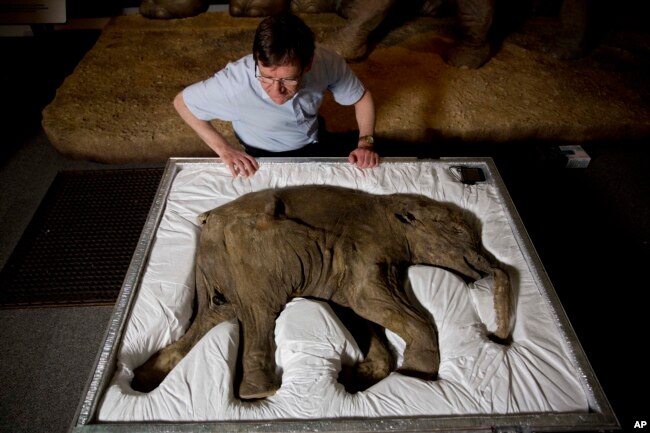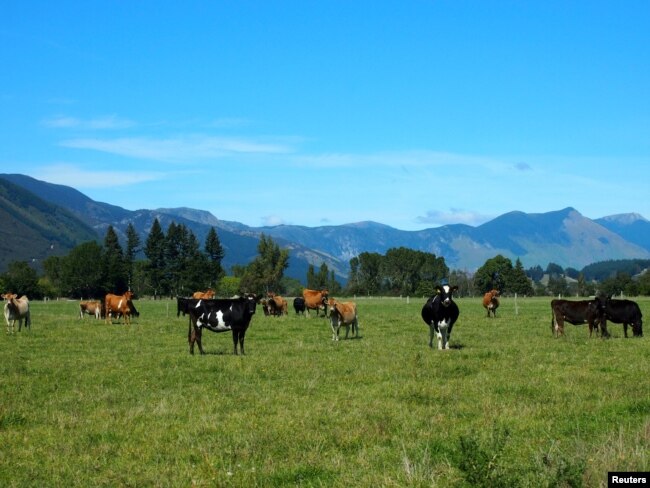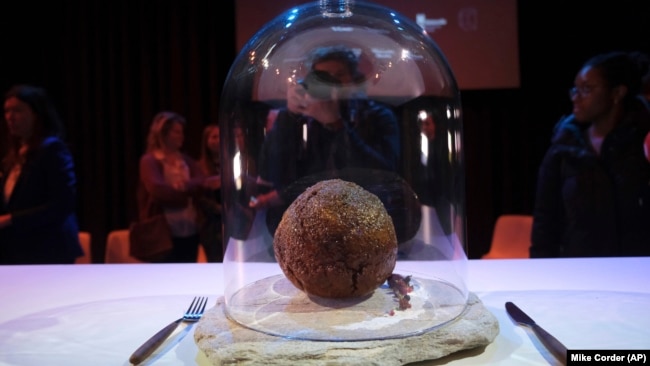マンモスを食肉に!!
温暖化により、食料事情は深刻さが増していくことは明らかです。
そして、家畜からの排出物は世界の温室効果ガス排出量の14.5%に相当するそうです。
出典:FAO Livestock solutions for climate change
https://www.fao.org/3/I8098EN/i8098en.pdf
国家安全保障の観点からも、自国の自給率を上げて、気候変動に対処する為代替肉、培養肉の検討はすぐ進めなければならない課題ではないかと思います。
VOAで英語を学びましょう!!
オーストラリア企業、絶滅マンモスを実験用食肉に使用(和訳)
Australian Company Uses Extinct Mammoth for Lab-grown Meat
March 31, 2023
オーストラリアの企業が、extinct絶滅動物であるウーリーマンモスの遺伝子情報を使って、実験室で育てた肉を作りました。
同社はオランダの科学館でこの作品を発表しました。エイプリルフールとして知られる4月1日の数日前のことです。
「これはエイプリルフールのジョークではありません」と、オーストラリアのVow社の創業者であるティム・ノークスミス氏は言います。「これは本当のinnovation新考案だです。」
※Vow:Head Office H.P.An
https://www.vowfood.com/what-we-do
関連記事
オーストラリアのVowが約67億円を調達、来年始めにシンガポールで培養肉発売へ | Foovo -フードテックニュースの専門メディア-
ラボで育てられた肉は、培養肉やセルベースミートとも呼ばれ、動物の細胞から作られ、ラボで培養されます。生産するために動物を殺す必要はありません。培養肉の支持者たちは、動物にとってだけでなく、環境にとっても良いことだと言っています。
Vowという会社は、マンモスと、マンモスの近縁種であるアフリカゾウの遺伝情報を組み合わせました。そして、その情報を羊の筋肉細胞に入れました。研究室では、ミートボールを作るのに十分な数になるまで、細胞は増えました。
世界では100社以上の企業が培養肉製品の開発に取り組んでいます。
専門家によると、この技術が一般的になれば、将来的に食肉生産が環境に与える影響を大きく軽減できる可能性があると言います。現在、世界中で数十億ヘクタールの土地が食肉生産に使用されています。
人間が食べるための培養肉を承認した国は、今のところシンガポールだけです。Vowは、この国で最初の製品であるニホンウズラの培養肉を今年後半に販売したいと考えています。
Vowは、このマンモスミートボールを生産する予定はありません。その代わりに、同社は、注目を集め、食肉の未来について人々に語ってもらうためにこの製品を作りました。
「我々は、食の未来について、人々を興奮させたかったのです…ユニークでより良いものがあるということを… そして、マンモスは会話のきっかけになると考えました」と、ノークスミス氏はAP通信に語っています。
セレン・ケル氏は、植物や細胞由来の食品を推進する非営利団体Good Food Instituteの科学技術マネージャーを務めています。ケル氏によれば、企業は通常、家畜や魚介類の細胞を使って培養肉を開発するとのことです。彼女は、実験室で育てれた肉は、畜産による排出を削減し、世界の肉に対する需要を満たすことができると指摘しています。
オランダで公開された大きなミートボールは、あくまで見せ物で食べるものではありませ。しかし、そのミートボールは調理されており、人々はその匂いを嗅ぐことができました。ノークスミス氏は、その場にいた人たちが、同社が生産した別の培養品であるクロコダイルのようなにおいがすると言ったと言います。
さらに、何千年も前に絶滅した動物の匂いを嗅ぐことを考えると、“fascinating” 魅力的だ”と彼は付け加えます。
Australian Company Uses Extinct Mammoth for Lab-grown Meat
An Australian company has made lab-grown meat using genetic information from a wooly mammoth, an extinct animal.
The company launched the creation in a science museum in the Netherlands. It came just days before April 1, known as April Fools’ Day.
“This is not an April Fools' joke,” said Tim Noakesmith, founder of the Australian company Vow. “This is a real innovation.”
The lab-grown meat, also called cultivated or cell-based meat, is made from animal cells and grown in a lab. Animals do not need to be killed to produce them. Supporters of cultivated meat say it is better not just for the animals but also for the environment.
The company, Vow, combined genetic information from the mammoth and African elephants, the mammoth’s closest living relative. The information was then put into a sheep muscle cell. In the lab, the cells increased in number until there were enough to make a meatball.
More than 100 companies around the world are working on cultivated meat products.
Experts say that if the technology becomes more common, it could greatly reduce the environmental impacts of meat production in the future. Currently, billions of hectares of land are used for meat production worldwide.
Singapore is the only country so far to approve cultivated meat for humans to eat. Vow is hoping to sell its first product there — cultivated Japanese quail meat — later this year.
Vow does not plan to put the mammoth meatball into production. Instead, the company created it to bring attention and get people talking about the future of meat.
“We wanted to get people excited about the future of food… that there are things that are unique and better… and we thought the mammoth would be a conversation starter,” Noakesmith told The Associated Press.
Seren Kell is science and technology manager at Good Food Institute, a nonprofit that promotes plant- and cell-based food. Kell said companies usually use cells from farm animals and seafood to develop cultivated meat. She noted that lab-grown meat can help reduce emissions from animal agriculture and satisfy worldwide demand for meat.
The large meatball shown in the Netherlands was only for show and not to be eaten. However, the meatball was cooked, and people could smell it. Noakesmith said people who were there said it smelled like another cultivated product the company had produced, which was crocodile.
He added that it is “fascinating” to think about smelling something from an animal that has been extinct for thousands of years.
Words in This Story
extinct -adj. referring to a plant or animal that no longer exists
innovation -n. a new thing such as an invention, or a new way of doing something
cultivated -adj. grown and produced under human care and control
unique -adj. the only one of its kind; unusual and special
promote -v. to help something develop or happen
emissions - n. (pl.) things that are released into the environment such as gases or (sometimes) radiation
fascinating -adj. very interesting


